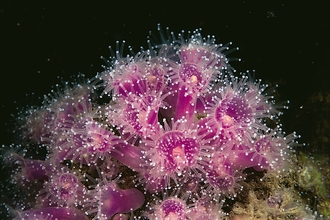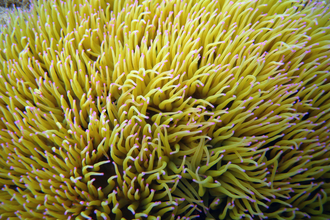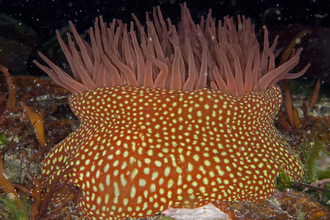
Fireworks anemone ©Paul Naylor www.marinephoto.co.uk

Fireworks anemone © Cathy Lewis
Fireworks anemone
This rare anemone lives up to its name with a spectacular display of long, white tentacles.
Scientific name
Pachycerianthus multiplicatusWhen to see
January to DecemberSpecies information
Category
Statistics
Tentacles: up to 30cm acrossColumn: up to 30cm tall
Conservation status
Nationally rare. Listed in the UK Biodiversity Action Plan as a species of conservation concern.





